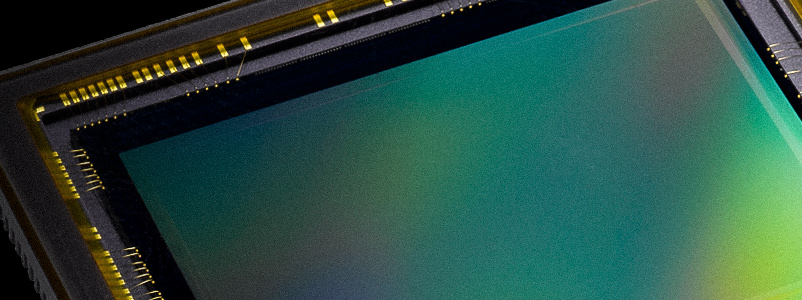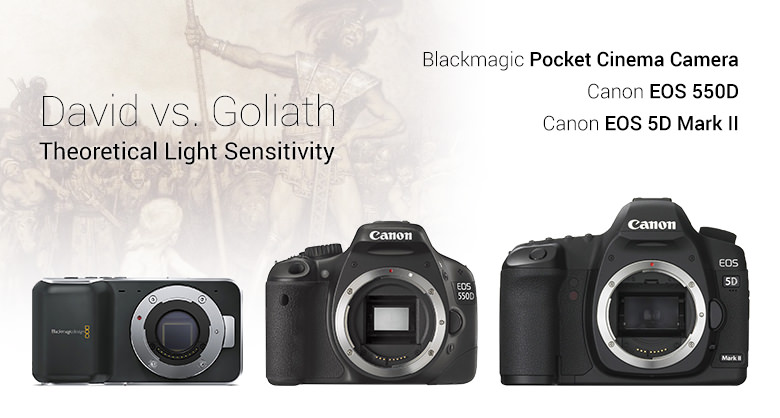There's a lot going for the Blackmagic Pocket Cinema Camera (BMPCC). But there are also downsides. One of the major things I've been hearing ever since its announcement is that it's got 'such a small sensor' in comparison to the current DSLR's and Super35 camera's. This means that the BMPCC doesn't have such a shallow depth of field, and that it's less light-sensitive - or is it...
Matching up David vs Goliath
To understand how this light-sensitivity thing works we'll have to think about it a little harder. It's just too easy to say that a smaller sensor is less light sensitive than a bigger sensor. It all comes down to resolution and the resulting size of each pixel on the sensor. Because it's those pixels that capture the actual light.
I'll try to explain this as clear as I can. I'll compare the Super16 sensor of the Blackmagic Pocket Cinema Camera to the APS-C sensor of the budget workhorse called Canon EOS 550D / Rebel T2i, because I own the latter and will be abled to put my theories to the test once I get my BMPCC. I'll also take the Canon 5D Mk. II into the equation, because that's one of the light-sensitivity legends.
Down to the micrometers
The sensor of the 550D is 22.2mm wide and has a height of 14.8mm. It's resolution it 5.184 × 3.456 pixels. Simple math will tell us the pixels are 4,28 × 4,28µm.
The legendary Canon EOS 5D Mk. II has a large fullframe sensor, one of the (relatively) few. It's measures 36 × 24mm and has a resolution of 5.616 × 3.744 pixels. Zooming in on the actual pixels on that sensor we're getting a pixelsize of 6,41 × 6,41µm. That's 150% of the 550D's pixel size. This makes perfect sense and is in-line with the expectations.
Now we're coming to the interesting part: what's going on on the surface of the Super16 sensor of the Blackmagic Pocket Cinema Camera? The sensor measures 12,48 × 7,02mm. It has a resolution of (merely) 1920 × 1080 pixels, because it doesn't need to take 21 megapixel stills - only (just over) 2 megapixel video. When we do the math we get a pixel size of 6,5 × 6,5µm.
And the winner is...
The Blackmagic Pocket Cinema Camera! Theoretically.

Wait! What just happened there?!
So, there it is. If we consider each individual pixel on the sensor as a sensor of its own - the camera with the largest sensors is actually the Blackmagic Pocket Cinema Camera. It's pixels are 1,4% bigger than those of the Canon 5D Mark II and 52% bigger than the pixels on the 550D/T2i. So theoretically, solely based on the numbers - the BMPCC should theoretically have a better light sensitivity than practically all DSLR's on the market today.
Let me strengthen one word in that conclusion there: theoretically. There's more to light sensitivity than just numbers, other things come into play as well - like built-in noise-reduction, native ISO, the actual quality of the individual pixel-sensors on the sensor, etc... Also there's a different look to noise of camera A and B. Camera A might produce much more likeable noise than B, which might produce the dreaded video-noise. So again - this is only by the numbers. But it's safe to say that the BMPCC will most definitely not under-perform in low-light situations when compared to other, bigger sensor camera's we're using, despite it's smaller sensor size.
I'll leave you with Philip Bloom's Hiding Place, which he shot as part of his Blackmagic Pocket Cinema Camera review. Towards the end you'll get to see and enjoy some glimpse of the low-light shots this little camera is capable of.


